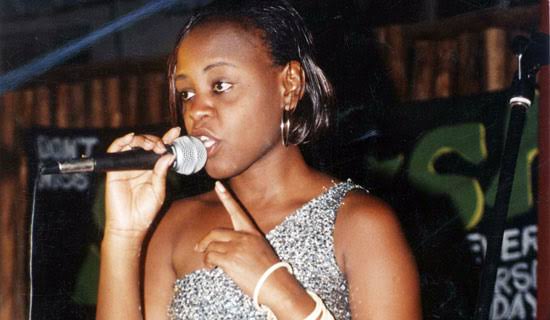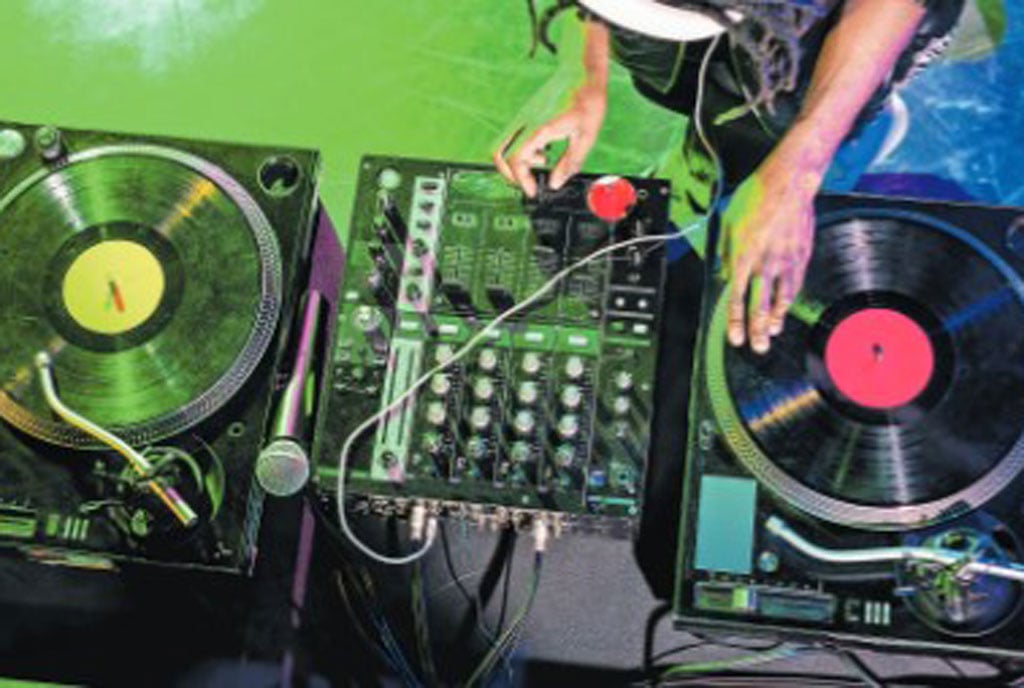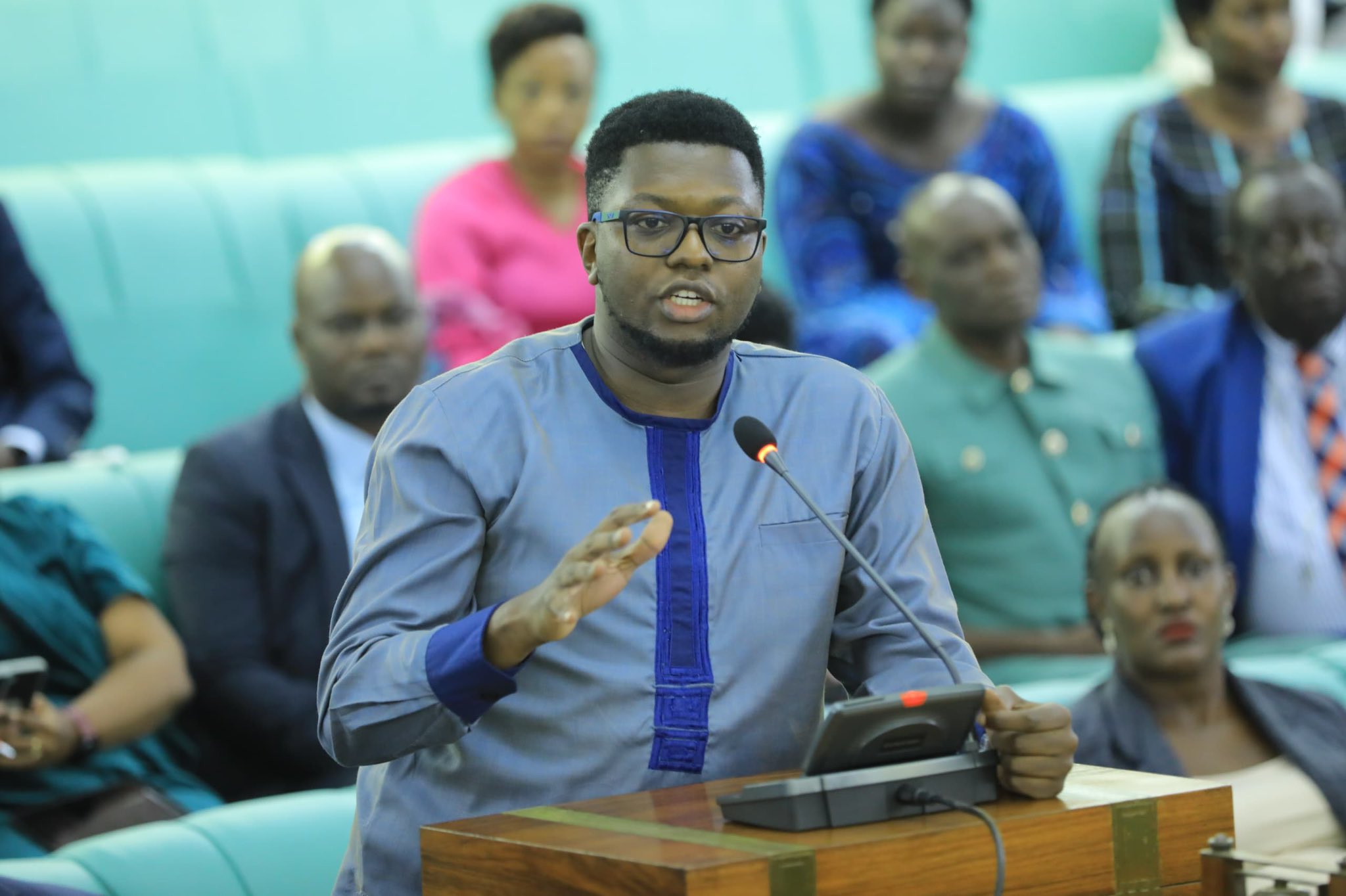Prime
In exile, Nnyanzi rediscovered his passion for arts

Nuwa Nnyanzi stresses a point during the interview at his stall. PHOTOS BY EDGAR R. BATTE.
What you need to know:
Starting out as a medical personnel for the Ugandan army, Nuwa Nnyanzi rediscovered his passion for arts while in exile. Since then, he has been bringing to life different works of art.
He leans back, slowly running fingers through his white beard as he contemplates his next response. Nuwa Nnyanzi reaches underneath the table, at his stall at Uganda National Cultural Centre (National Theatre) Craft Village for a face towel, to wipe his face and then his clean- shaven head.
Despite the searing sun, some customers, mostly foreigners, make a stopover at Nnyanzi’s stall to make inquiries, check out an art piece or batik on sale or make bargains on the beautiful artistry on display.
His seat is adjacent to the main entrance of the stall so when a customer enters the shop, he is the first person to interface with. He requests for a quick interlude to attend to them before young female and male attendants at another entrance spring to their feet to give more attention to the customers.
Nnyanzi, then reclines in his black leather and metallic chair and continues with the narrative in a calm and composed demeanour. He momentarily looks to the ceiling and in the compound of the craft village at Uganda National Cultural Centre as if in search of answers. It is perhaps to recollect and reflect on experiences and incidents from his past.
When he speaks, Nnyanzi is articulate. Our conversation started with a phone call I made to pick his mind on something related to the 30th anniversary of the National Resistance Army’s (NRM). I wanted to know where he was in 1986 and the state of affairs in the country at the time. The veteran artiste was willing to share more.
Starting out
Nnyanzi was born an artist but he had not paid much attention to the talent until he went into exile in Kenya in the 1970s.
Before going into exile, Nnyanzi worked as an assistant to the in-charge of medical stores in the general military hospital in Mbuya.
He got problems at work and was detained for nine days. He narrates that at the time there were accusations and counter-accusations among officers who were believed to undermine the government of president Idi Amin.
“We were recruited by Colonel Gideon Bogere as medics. He had problems with some of his colleagues who didn’t regard those of us associated with him kindly, thinking we were up to “something”. In fact, we were dispersed after training in 1972 to different parts of the country. I was sent to Moroto District, Kasirye Ggwanga was sent to Moyo District, the late Prince Fred Ssuna was sent to Bombo,” he recollects.
Nnyanzi was trained as a health inspector and others as medical assistants. He says their dispersions were because of the friction and jealousies among their superiors.
He served in Moroto District for two years and was redeployed at the general headquarters in Mbuya where he was promoted with responsibility of being assistant of medical stores.
He was trained on the job. When the body of the late Kabaka Sir Edward Muteesa was returned by Amin, there was a deliberate effort to accommodate royals in key positions. Nnyanzi was in the royal circles.
“I looked at it as an opportunity to defend my country,” he recalls. However, his troubles stemmed from an incident where he pointed out that the military medical stores were weak since they were made of corrugated iron sheets and he argued that people could easily break into them.
Plotting a way out
Shortly after that, the stores were broken into and Nnyanzi was immediately arrested. He was suspected to have been part of the plot and the accusation levelled against him was that he had broken into the stores and supplied medicines to guerrillas who wanted to overthrow Idi Amin’s government.
That is how he ended up in Makindye Military Barracks, but there was no evidence. He says he was framed by one of the senior officers who disliked him. He was cleared but when he returned to office, he was warned that his life was in danger.
“And it was top leadership that had gone to Mbuya and made allegations against me, a junior officer. When I called general headquarters, the person who received the call was alarmed that I was still alive. I got the message and went underground,” he recalls.
He went to Jinja Town to stay with a cousin, Col Sulaiman Hasham, a brigade commander based in Mbale, who had just survived being imprisoned. The two decided to keep a low profile. After a year, Hasham told him he was still being hunted so Nnyanzi started planning to go into exile, in Kenya.
The rebirth
“When I got to Kenya, I went straight to my aunt’s place who is married there. She runs a nice restaurant in Westlands and Ugandans frequent it. That is where I stayed,” he recalls.
With no job but time, Nnyanzi began rejuvenating his interest in art. He would paint and draw people’s portraits and among many, that of Kabaka Muteesa given his interest as a monarch.
Flashback to his childhood, Nnyanzi’s pursuit of a journey in the medical world stemmed from his parent’s careers. His father was a laboratory technician who served in the Second World War while his mother was a midwife who studied nursing at Mengo hospital and midwifery at Mulago National Referral Hospital.
Well, his sojourn in the medical field had ended up rather badly. In exile, he found solace in another career path, retracing his steps to a passion he had not paid much attention to. One day he met a friend, Daniel Ssekanwagi, who knew he had drawing skills and that was the beginning of his journey.
Ssekanwagi was making batiks, which Nnyanzi says, is a very precise form of art and calls for clarity of mind. There were many people making batiks at the time and Nyanzi and Ssekanwagi needed to go at it a different way.
“The sleepless nights we spent researching and actually making batik helped me cope with life in exile. By the time I was done with one piece, the mind was tired,” he recollects, adding that the long hours of work would not let him worry about life in exile. Art became that therapeutic factor for the artist.
The break
The two artists earned their break when they developed unique batik. They took it to one of the batik retailers in Nairobi. When they got to an Indian’s shop, Nyanzi made sure he spread the batiks and soon he saw interested people, mostly tourists, staring at their batik designs.
He asked the shop owner to keep the batiks on display and they would check on him after a week’s time to find out if he had sold some. Hardly had they moved a few metres away from the shop than the shop owner called them.
Tourists had bought all their batiks. He handed them their money and asked them to make more and supply him. That was 1978.
In 1979, Amin was overthrown and when he visited Uganda, friends and former colleagues in the army, they asked him to re-join.
“I knew Milton Obote was going to return and there was no way I was going to serve under him. No amount of training and discipline would prepare me to serve under Obote for what he had done to our king (Kabaka Muteesa) and the country. My friends told me that if I detested Obote that much, then it was wise to stay in exile,” he recounts.
He had officially returned from Kenya and United National High Commission for Refugees (UNHCR) could no longer protect him. When he went back, it was “voluntary” exile.
And this time, he had to think of a smart way to commercialise his art career. He decided to dedicate his life to doing art and batik was his main conveyor. He needed to work smarter than harder.
Maiden showcase
“First I had to hold an art exhibition in a respectable gallery. I took my art to the Goethe Institute and presented it to its director. He asked me why I chose to showcase batik yet it was all over the place. I asked him to look at my work and if he was not satisfied, I would leave,” he adds.
When the artist opened his bundle of batik, the institute’s director liked the work and promised to support Nnyanzi. The Ugandan community supported him by buying his art.
He then started looking for a guest of honour for his exhibition. He approached the ambassador of Germany at the time and he turned him down but Nnyanzi’s spirit was not broken.
The ambassador was doing his homework and discovered that Nnyanzi was worth his salt. He attended the exhibition almost incognito.
At the exhibition, a couple asked to visit him the following day who happened to be BBC journalists. Viva Magazine, a prestigious publication at the time, also covered and reviewed his exhibition.
And as he flipped through the photographs taken during the exhibition, there were photos of the German ambassador.
He smiled, with gratitude. He became a regular exhibitor. Some of the public showcases were specially themed on issues like family planning and culture.
And while the clock ticked away, Nnyanzi did not have any big regrets for living in exile. He was only discomforted by raising his children as refugees.
His paintings
Nnyanzi’s batik painting “Homage to the first born” is featured in the UNICEF greeting card collection. Another of his works, a 1987 batik painting “Desperately longing for shelter” was selected to be used in minting a medallion by the United Nations High Commission for Human Settlement.
In 1993, during the Pope’s visit to Uganda, Nnyanzi’s design, “The Pentecost” was used in executing a wood sculpture, which was presented to Pope John Paul II.
In 1998,the head of the Roman Catholic Church, commissioned Nnyanzi to produce portraits and a collage which were presented to the Archbishop of Canterbury when he visited Uganda.
Fact file
Nuwa Nnyanzi a self-taught, Ugandan artist of international repute was born on October 28, 1952. His late father was a laboratory assistant and his mother is a retired midwife and nurse. Nnyanzi is married with two children. He attributes his talent and success to the Grace of God.
Nnyanzi’s works of art are in batik, pastel, acrylic, oil and water colours which are earthy, vibrant and reflective of the strong and sweet African sun. Nnyanzi started painting in 1978 while in exile in Nairobi, Kenya. He has held many exhibitions and slide-talk presentations in Africa, Europe, North America, Japan and Australia. In 1996, he had the privilege and honour of hosting among many other dignitaries, the late Ron Brown, who was Secretary of Commerce of United States of America, at his studio/gallery in Kampala.
What others say
“By the way he is my uncle. As a person, he has a great sense of humour. I grew up knowing him to be the easier uncle to talk to, and about his artistry, I can tell you that the name Nuwa Nyanzi is a brand that resonates with Batik art experience in Africa and the world over. His touch is seen in the precision, clean lines he uses on very simple forms to portray often complex subject matter of his art.”’
Christine Mawadri- fellow artist, niece
“Nyanzi is a very important pillar in Ugandan art industry because when he came back from exile, he rejuvenated the industry in a time when art was being forgotten. I cannot comment on his style of artistry.”
Daudi Karungi- artist




